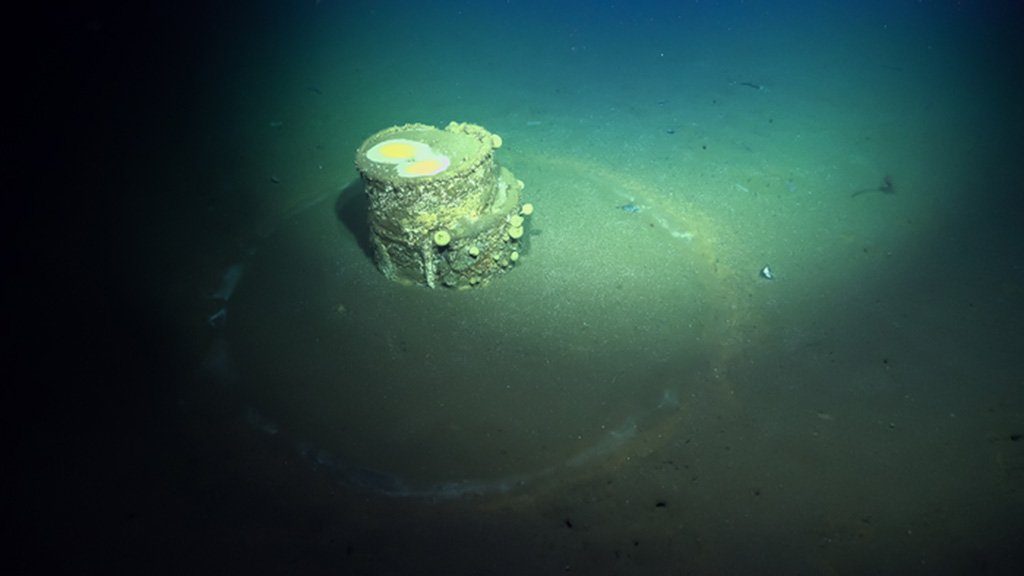
This heavily rotten barrel has been standing on the seabed off the coast of Southern California for around 50 years. It contains highly toxic chemicals that were used in the production of DDT and were then simply disposed of in the sea.
Scientists from the Scripps Institution of Oceanography in San Diego and the US Geological Survey, among others, recently examined this and five other toxic waste drums in more detail as part of an underwater expedition. With the help of a diving robot, they collected sediment and biological samples around the former tipping point on the deep sea floor. It is estimated that between 1947 and 1982 hundreds, maybe even thousands of barrels containing toxic waste from the production of the now banned insecticide DDT were thrown into the sea here.
The aim of the current expedition was to use the samples to determine the extent to which the toxins have already entered the marine environment. In addition, the researchers took samples from eight other deep-sea locations, where rich deposits of minerals and metals are suspected. “We can only protect what we know and understand,” explains Wendy Schmidt from the Schmidt Ocean Institute. “But human impact on the ocean has done a lot of damage over the past 75 years.”
The evaluation of the samples from still largely untouched areas of the seabed and the comparison with severely disturbed areas such as the wild toxic waste store should help to better determine the extent of the damage. “We are only just beginning to assess the effects of such interventions on the ocean communities,” says Lisa Levin of the Scripps Institution of Oceanography.